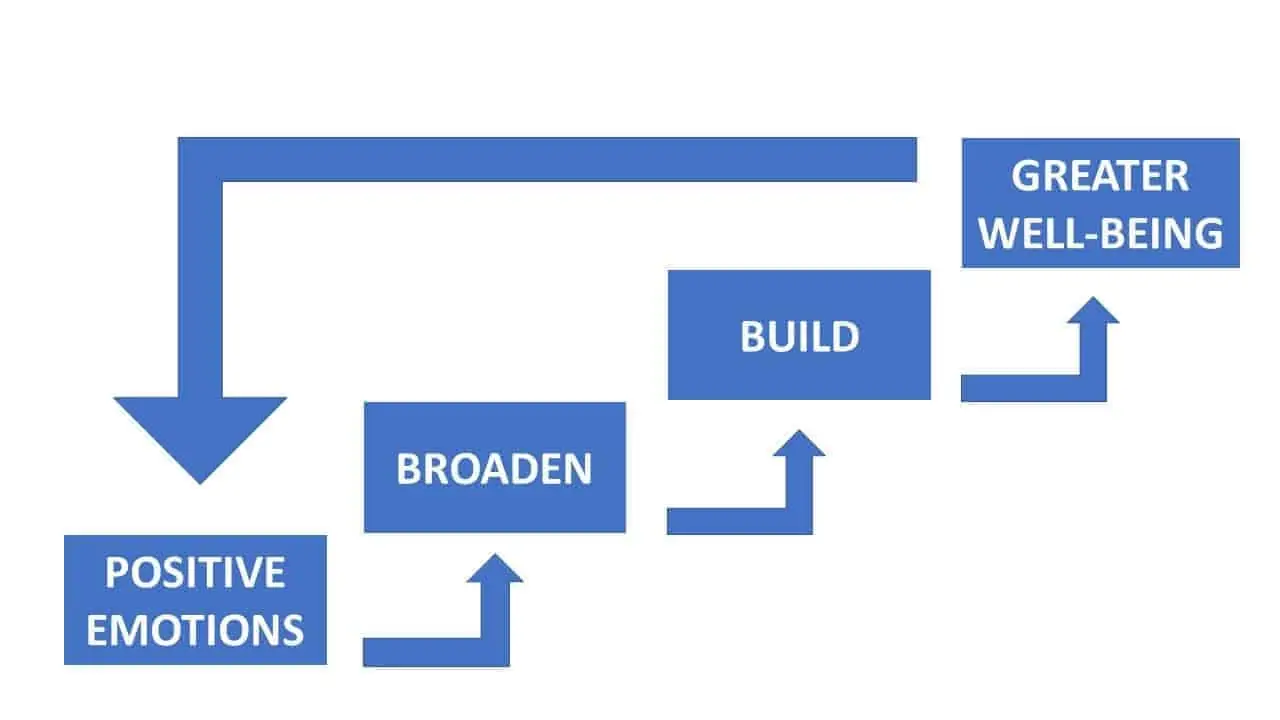Today's Friday • 6 mins read
Stress can feel overwhelming, but Dr. Barbara Fredrickson reveals how small positive shifts in our day can expand our mindset and build long-lasting resilience.
Simple daily habits, like limiting negativity, focusing on what you can control, and nurturing positive connections, can create an “upward spiral” of well-being.
- The Broaden-and-Build theory tells us that positive emotions, such as happiness, help us see more possibilities in our lives and inspire us to try new ideas and actions.
- Over time, as we try these new experiences, we build valuable skills and mental strengths.
- The theory was developed by Barbara Fredrickson around 1998.
Read on to discover 10 proven stress-coping strategies, 10 quick anger-relief techniques, and actionable steps to harness the broaden-and-build framework in crises.
“Cultivating positive emotions opens our minds and builds lasting resources.”
—Barbara Fredrickson
10 Ways to Cope with Stress Using the Broaden-and-Build Theory
- Limit Crisis News. Most news is about negative things, because negativity sells. Keep your news intake to 5–10 minutes daily. It would protect your mental space from unnecessary stress.
- Focus on Controllables. Not everyone you meet in your day will do as you want them to. Don’t lose your mind over those. Instead, channel your energy into areas where you have influence. This turns worry into positive action.
- Embrace Balanced Productivity. Permit yourself to not be busy all the time, and teach yourself to tolerate boredom in stages. Leave things at good enough. Stop chasing perfection all day.
- Release Guilt of Not Knowing All. The world is changing so quickly that it is impossible to know everything. Let go of the nonstop pressure to learn new skills. Simply managing daily life is a meaningful achievement.
- Tackle Loneliness with Connection. You might be lonely, and you may not even realize it. Find out the 10 Hidden Signs of Loneliness. Try a random conversation with someone in your office, invite a friend to a coffee, or call someone over video. Or self-soothing rituals like a warm bath, soft blanket, or favorite playlist.
- Move Your Body. Any physical activity, like walking, yoga, or stretching, boosts mood and clears mental clutter through endorphin release.
- Maintain the Basics. These are the basics: healthy meals, restorative sleep, personal hygiene, and a tidy living space to stabilize your baseline well-being. Prioritize them.
- Manage Conflict With Patience. Simple debates can turn into major conflicts due to the high stress of having to prove a point. So, when you disagree with someone, or they disagree with you, stay calm. Disagreements don’t always have to break relationships.
- Reward Your Resilience. Celebrate small wins with tokens of self-care. After all, your ability to endure hardships deserves acknowledgment and accolades.
- Seek Help for Abuse and Toxicity. If you face abuse or harsh interactions at home, reach out to trusted online resources immediately.
10 Ways to Snap Out of Anger with Broaden-and-Build
- Take a Time-Out. Step away from the trigger and return only after you’ve calmed your racing mind.
- Freshen Up. Wash your face, brush your teeth, change clothes, or stretch—small physical shifts disrupt angry feedback loops.
- Practice 4–7–8 Breathing. Inhale for 4 seconds, hold for 7, exhale for 8. Try a 3–6–5 cycle if this feels more manageable.
- Use the 5–4–3–2–1 Grounding Technique. Notice 5 things you see, 4 you hear, 3 you touch, 2 you smell, 1 you taste to center your awareness.
- Listen to Music. Close your eyes and let a favorite song regulate your mood—music can shift every aspect of mind and body.
- Avoid Venting. Cathartic outbursts often amplify anger. Honest conversations later can diffuse tension without fueling the fire.
- Dance or Exercise. Disconnect body from mind. Physical movement changes muscle tension and rewires your emotional state.
- Delay Expression. If you must address anger, wait 20–30 minutes. Time defuses intensity and fosters clearer communication.
- Explore Underlying Emotions. Ask what fear, insecurity, or disappointment is misdirected as anger. Name the root cause to weaken its grip.
- Reconnect with Values. Reflect on what you value in relationships and health. This perspective pulls you out of the downward spiral.
Broaden-and-Build Theory of Positive Emotions
Barbara Fredrickson’s Broaden-and-Build Theory reveals how fleeting positive emotions—joy, gratitude, serenity—broaden our thought-action repertoires and build enduring mental, social, and physical resources. Positive emotions serve as an adaptive survival function: they expand attention, spark creativity, and foster social bonds. Over time, these resources fuel an “upward spiral” of well-being that counteracts stress and adversity.
“Positive emotions broaden people’s attention and thinking, which in turn builds their resources.”
—Barbara Fredrickson

In contrast, boredom can trigger a “downward spiral” of pessimism, frustration, and powerlessness. How you navigate boredom determines whether you climb higher into contentment or sink into stress and inertia.
Baking Bread: A Broaden-and-Build Example in Crisis
Baking bread at home exemplifies the upward spiral. The basic ingredients and simple instructions spark positive emotions about security and mastery. As you knead dough and watch it rise, boredom gives way to sensory immersion. Sharing photos or loaves with friends triggers social bonds—an emotional contagion that reinforces optimism.
This “bread therapy” meets all four stages of Broaden-and-Build: positive emotions (anticipation), broadening (finding a recipe), building (developing baking skills), and contentment (enjoying the result). No wonder so many turned to home baking during lockdowns: it’s an accessible hobby that transforms stress into creative flow.
4 Steps to Start Your Upward Spiral
- Positive Emotions
Identify small actions—like baking, music, or a brief walk—that spark joy or calm. - Broadening
Let those emotions expand your perspective. Explore new ideas, hobbies, or connections. - Building
Develop skills and resources: learn a recipe, practice an instrument, or strengthen a friendship. - Contentment & Fulfillment
Savor the process and outcome. Recognize the cycle and repeat before boredom sets in.
Final Thoughts
The Broaden-and-Build theory turns brief moments of joy into a powerful, self-reinforcing cycle of resilience.
Between the upward and downward spirals lies boredom. Embrace boredom with creativity and positive action, and watch an upward spiral of well-being unfold.
• • •
Author Bio: Aditya Shukla is an applied psychologist and the creator of Cognition Today, a website that explores the inner workings of the mind.
√ Also Read: 10 Things You’ll Regret When You Are Too Old
√ If you enjoyed this, please share it.
» You deserve happiness! Choosing therapy could be your best decision.
...
• Disclosure: Buying via our links earns us a small commission.
